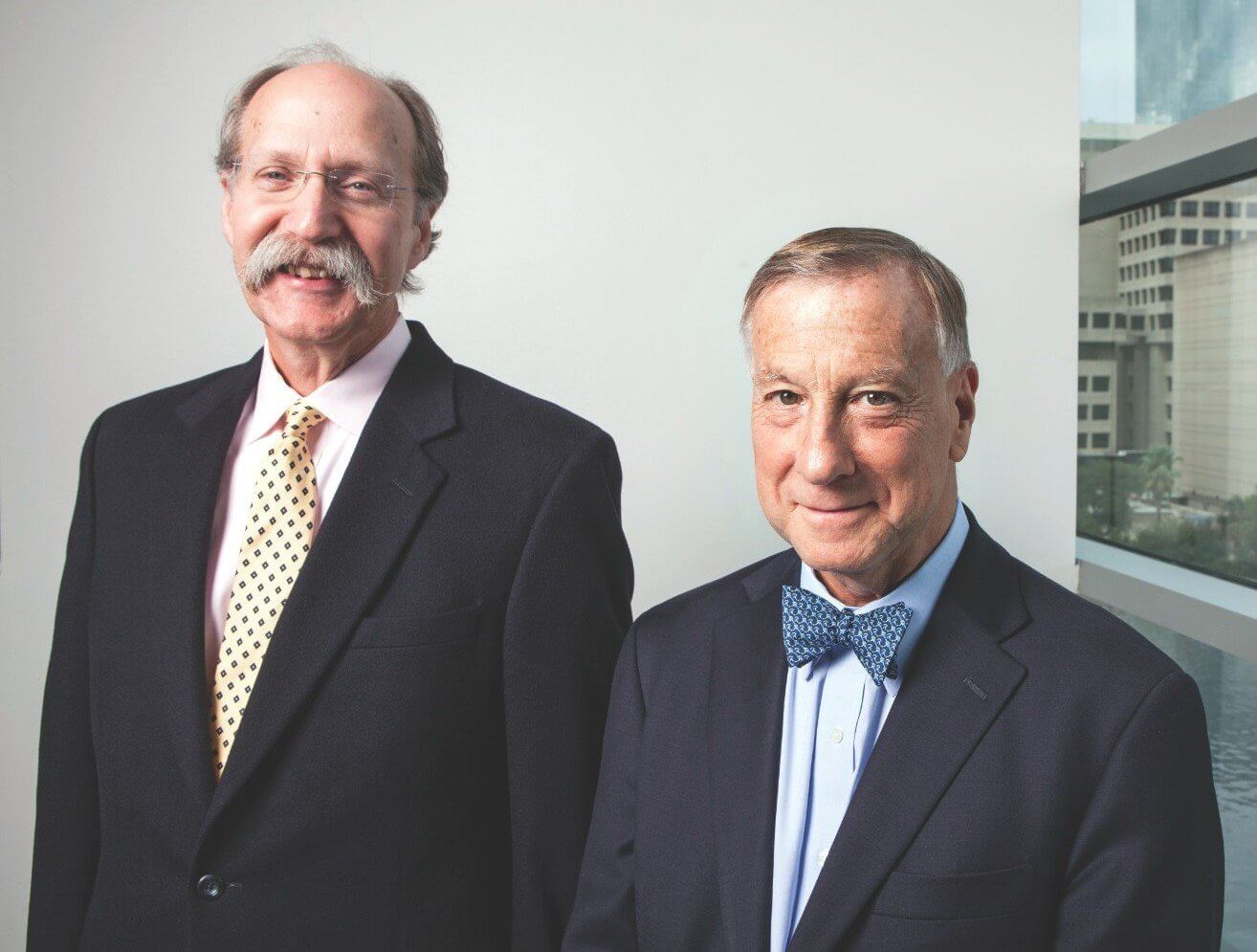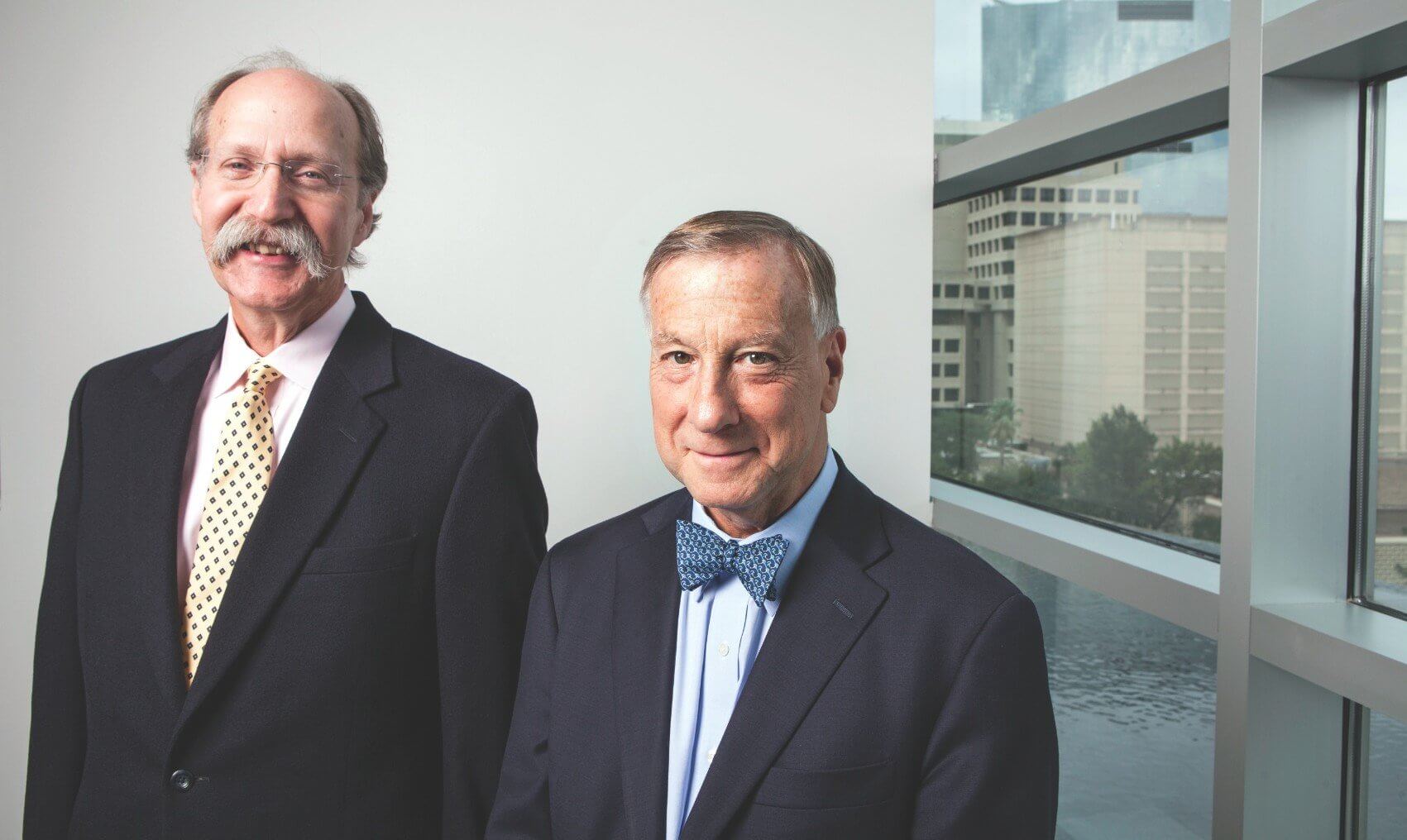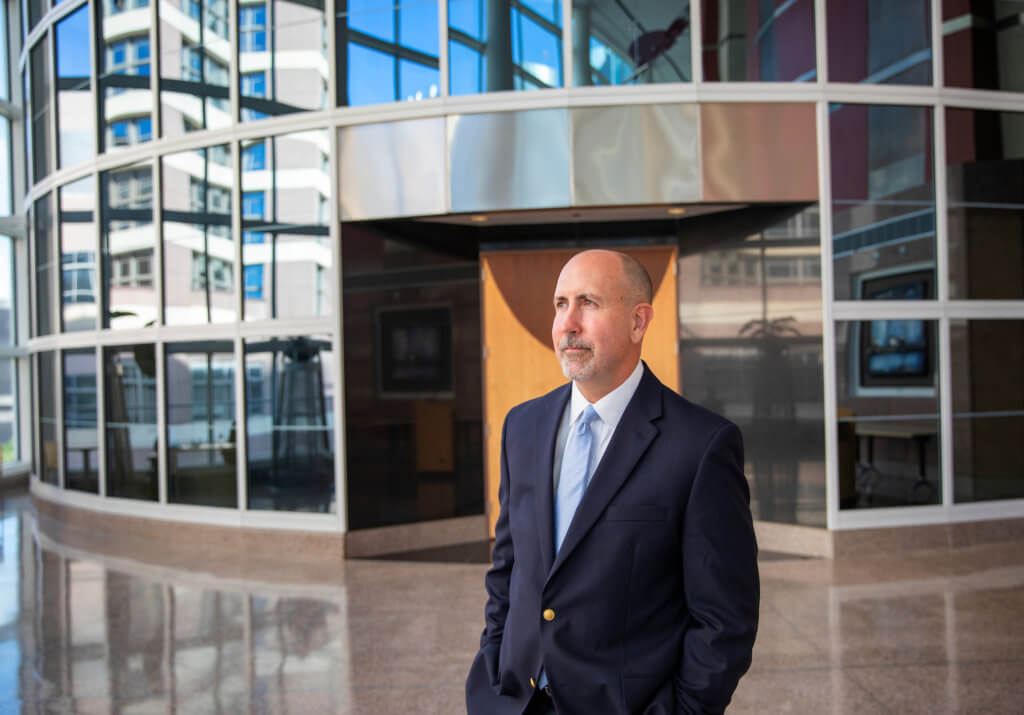Initiatives for Change

From the micro to the macro, at some level, health policy influences each of the member institutions within the medical center. Health policy requires a broad spectrum of legislative and regulatory efforts, from improving the efficiency of public programs to preparing health professionals to meet those patient needs. For the budding Texas Medical Center Health Policy Institute, on the cusp of rolling out a series of six evidence-based policy solutions to advance the health of Texans statewide, that may be a daunting task, but it’s one well worth striving for.
“Our mission is to provide value to the member institutions, the city and the state,” announced Arthur Garson Jr., M.D., MPH, director of the Texas Medical Center Health Policy Institute. “Every one of our programs, whether focused on the Texas Medical Center or beyond, was not here a year ago; that provides us with a blank slate, but one we have to draw upon carefully, as we only get to do ‘new’ once. By collaborating across the vast and unique talent housed here, the Texas Medical Center Health Policy Institute will become a source of unbiased information, helping to develop policies that reduce barriers to health.
“We had a tremendous kickoff with the Texas Medical Center health policy design team and have used their strategy as an important guide,” he added. “Many of the design team members are on our Institute Executive Committee.”
With an emphasis on drawing from rigorous data-driven approaches and real world experiences, these initiatives reflect the Texas Medical Center Health Policy Institute’s broad scope and aspirational mindset. Their first project, known as “Decision Support,” aims to solidify their status as a source for accurate, unbiased data that can help support legislative decision-making. While culling large swaths of information and presenting it in accessible terms is no easy feat, the Texas Medical Center Health Policy Institute is setting a high standard with their turnaround time—72 hours for both data and analysis.
“In the typical academic world, that’s 72 days or even 72 months,” laughed Garson. “This will be a service for state and local legislators and the government relations representatives from the medical center institutions, for free, and they’ll have the option to keep their information confidential. Otherwise, it’ll be archived for others who might want to see the question and their response.” In preparation for the upcoming legislative session, an online submittal system will be in place, where requests can be made and logged, beginning January 10, 2015. No more than three days later, the submitter will receive what data exists, any necessary sources, graphs and commentary for interpreting the information, and two to three brief analyses from Texas Medical Center experts.
“A lot of what influences policy is based on people’s personal experiences, or the experiences of people close to them,” reflected Stephen H. Linder, Ph.D., associate director of the Texas Medical Center Health Policy Institute. “As a consequence, there needs to be an alternative source to provide evidence based on a wide variety of experiences that has some validity in terms of how the data was gathered and interpreted. We want to provide a part of that.
“The legislature is such a fast moving process, once it begins, and it takes some twists and turns that aren’t predicted ahead of time,” added Linder, who is also associate director of the Institute for Health Policy at The University of Texas Health Science Center at Houston (UTHealth) School of Public Health. “The big thing about this kind of service is that it functions so quickly, which is essential when you’re providing some neutral basis on which to make decisions.”
“The amazingly unique thing about the Texas Medical Center, in the realm of health policy, is that if you have 55 institutions, you have 55 approaches to health policy. Rather than emphasizing our differences, it’s about embracing the different approaches that we can utilize—that’s an opportunity that nobody else in the world has.” — Arthur Garson Jr., M.D., MPH, director of the Texas Medical Center Health Policy Institute
That inventive, large-scale approach is evident in another of the Texas Medical Center Health Policy Institute’s ambitions—developing a program to improve access to care throughout the state. “We’ve been working with other groups, both locally and nationally, to help further the idea of improved access to Texas,” said Garson. “Ultimately, this is about creating plans that the state can utilize to improve access for the uninsured, and there are over 6.2 million uninsured citizens in Texas.
“We may think that being employed takes care of health insurance—and Texas has twice the percentage of full-time workers in the U.S. average—but we still have the highest rate of uninsured in the country, due to the high cost of health insurance and the fact that individuals and small businesses have difficulty affording it,” he added. “The cost of health care is way too high and those of us in the medical profession need to do our part to figure out how to reduce the cost as well. There is a lot of waste out there—the estimate is about one third of all our health care dollars.” Furthering that goal, the Texas Medical Center Health Policy Institute will be working with other groups, both in the state and nationally, to develop uniquely Texan approaches for improving access to care.
Cultivating unique approaches necessitates an understanding of the people that you’re trying to help. Taking the pulse of citizens throughout Houston and Harris County, the Texas Medical Center Health Policy Institute will be initiating a yearly survey on what health consumers want. Providing data of interest to the medical center, the city and the state, it has the added benefit of potentially generating new research in the process.
“It’s something that will not only inform us,” said Garson, “but since we’re going to repeat it yearly, it will be something that we can use to watch trends develop about how the attitude of Texas consumers changes over time. That way, we can ensure that we deliver what people need and want.” Appropriately named “What Matters Most to the Health Care Consumers of Texas,” the survey strives to provide context, clarity and purpose to efforts throughout the medical center, and beyond.
Providing the scaffolding to support the development of emerging policy, the Texas Medical Center Health Policy Institute has cultivated a grants program for influencing health policy work in a tangible, measurable way. “Our intent is to provide research grants for work that can have some demonstrated impact,” explained Linder. “We’ll be asking the grantees to provide some metric to be able to show prospective impact. With some of the projects, you won’t be able to see the impact for 3-5 years, while others will be quicker. Our portfolio will include both short and longterm studies, with some of them answering complex questions and others acting as impact studies that attempt to assess prospective health policy.
“We’ll be looking for some awareness on the part of the grantee about who the potential beneficiaries of this information are, whether or not they’ve made contact and what are the plans for dissemination,” he added. “Having some sense of follow through is critical. Just producing research isn’t enough—they’ll also need to have plans to ensure that this research is utilized and that there’s uptake on the other side by decision makers. With a first call for proposals going out next spring and the review of those proposals coinciding with the end of the legislative session, I expect we’ll be very busy.” With an emphasis on fostering a climate of collegiality that also allows submission to be prioritized, applicants will receive a science-based score in addition to a collaboration score—the greater the number of collaborating institutions, the higher the score.
Educating the next generation of leaders in health policy has always been a priority for Garson, who developed the STAR course at the University of Virginia (U.Va.). Continuing as a joint program between U.Va. and the Texas Medical Center, the STAR course is a semester long course beginning in January, currently taken for credit at Cornell University, U.Va., Vanderbilt University and the UTHealth School of Public Health. A lineup of 16 renowned national health policy experts, each of the “stars” (such as Mark McClellan, the former administrator of the Center for Medicare and Medicaid Services and administrator of the FDA, as well as Uwe Reinhardt, the noted health economist from Princeton) is given a designated week to address health policy issues in an interactive format.
“Every Sunday, the star sends us articles for the students to read, and the students generate questions with their local professors before sending them back to me,” explained Garson. “I’ll select a group of questions, and on Thursday night, the star goes live on television using a webinar that’s open to not only the students from the universities, but to the public, as well.”
This past year, over 200 people from all over the country dialed into the webinar as listeners. Garson aims to modify the national STAR program to fit into the framework of the medical center, allowing viewers to interact with the webinar in a live format—potentially at the Texas Medical Center’s newly launched Innovation Institute.
“These are the top experts, either in the United States or in Houston, who will bring their perspective in a way that, hopefully, is accessible,” said Garson. “This is not somebody writing some big, highfalutin paper, this is at a very personal level where students and those tuning in get to not only listen, but also get an idea of the people behind the words. It’s about the hope that these people will allow students and audiences to understand that these concepts are not as complex as one would think—it makes them bite sized. These people are amazingly great teachers, and it gives students access to people and ideas in ways that are more lasting and less formal.” In addition, the Texas Medical Center Health Policy Institute is hosting a separate, local course within the next year based on a similar format, involving policy experts from our own community.
For Garson, leading by example is the best instructional model available. In a similar vein, the Texas Medical Center Health Policy Institute’s final project (at least for now), “Population Health,” aims to incubate novel approaches to addressing population-wide issues, using the outcomes as the foundation for evidence-based policy.
“We have 55 institutions here, each of whom are employers, and many of who take care of patients,” said Garson. “The idea here is to create one or more programs that address a population issue, such as obesity, and will hopefully allow each institution to approach that problem in a way that we learn from, as employers. We’re trying to find approaches that work, using the medical center as a test bed for both employers and patients.
“The amazingly unique thing about the Texas Medical Center, in the realm of health policy, is that if you have 55 institutions, you have 55 approaches to health policy,” he added. “Rather than emphasizing our differences, it’s about embracing the different approaches that we can utilize—that’s an opportunity that nobody else in the world has.”
“The Texas Medical Center Health Policy Institute is really about focusing on the balance between preventative care and health care delivery,” noted Carolyn Belk, vice president of government affairs for Houston Methodist Hospital. “There’s a lot of proactive work involving education, best practices and population management. In some respects, I think it’s tackling some of the more challenging aspects of health care and research—it’s aspirational, but we have a lot of talent involved with the institute. All of us think that it’s better to be far reaching and accomplish as much as we can, rather than to limit our goals and objectives.” Given the deep well of potential that exists within the Texas Medical Center, it’s hard to disagree.




